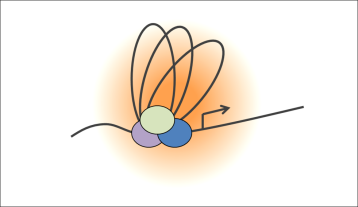
3-Dimensional spatial structures such as chromatin loops are associated with control of gene transcription.
Precision cancer medicine relies on understanding the individual workings of each cancer and person in order to develop tailored therapies. The advent of next-generation sequencing has greatly accelerated progress towards precision medicine.
However, DNA sequencing studies have revealed that only 2% of the genome is coding. We are interested in the mechanisms by which the non-coding “dark matter” of the human genome could be functional.
One mechanism is through long-range chromatin interactions with target genes. Chromatin interactions are regions of the genome that are far apart in the linear genome sequence but come together in close 3-dimensional spatial proximity, may constitute common mechanisms for gene regulation. This includes local chromatin interactions as well as Topologically-Associated Domains (TADs).
Our lab’s main hypothesis is that epigenetic factors, transcription factors, and non-coding RNA are mutated in cancer, leading to dysregulation of chromatin interactions and consequent dysregulated transcription. This suggests that therapies targeting epigenetics and RNA may have the potential to treat cancer. We study this question in the context of all cancers, with an emphasis on acute myeloid leukemia as compared with normal haematopoiesis.
The lab includes both wet lab and dry lab research, as well as an RNA Epigenomics Core for processing clinical blood-related samples.
We thank the National Research Foundation of Singapore and the Ministry of Education for grant support. For all requests, please contact Melissa directly.